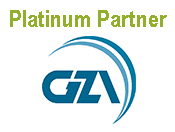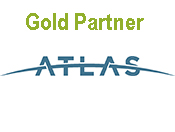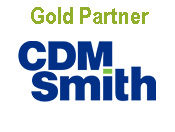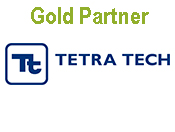Considerations for Appending Limitations and Conditions to Waste Site Cleanup OpinionsBy: Jeanine Grachuk, Principal, Beveridge & Diamond and Wesley Stimpson, LSP and LSPA Past President - both from the LSPA's Loss Prevention Committee Limitations have traditionally been included in reports produced by environmental consultants in the real estate transaction market place. It appears that many of these same limitations are being included in Waste Site Cleanup Opinions filed with MassDEP, typically as an appendix entitled “Limitations,” “Limitations and Conditions” or similar titles. The LSPA’s Loss Prevention Committee has explored the types of provisions included and whether they offer any protection to the LSP and his or her employer. We conclude that these provisions have limited legal impact, but may provide an opportunity to explain to the public the assumptions and limitations on the information collected that formed the basis of the LSP’s opinions. As the Loss Prevention Committee has indicated in previous articles, each LSP has relationships with and obligations to his or her clients, the Commonwealth, and the public. The LSP’s relationship with his or her client is based on contract, preferably a written contract signed by both parties, which sets out any limitations that the LSP deems appropriate and that the parties have agreed to. Click here to read an article from the LSPA's October 2008 newsletter entitled "LSP-Specific Contract Terms: Unanticipated Additional Client Costs." The LSP’s relationship with the Commonwealth has two related pieces: assisting clients, who are typically potentially responsible parties, to meet MassDEP’s requirements associated with site response actions and meeting the licensing board’s (the Board of Registration of Hazardous Waste Site Cleanup Professionals, or “LSP Board”) requirements to maintain the LSP’s license. MassDEP’s requirements are found in M.G.L. 21E and the MCP, which essentially set out the playbook for how to achieve an appropriate assessment, remediation and closure of sites. The LSP’s relationship with the LSP Board is governed by M.G.L. 21A, §19 et seq. and associated regulations, 309 CMR 1.00-9.00, which set out licensing requirements and the professional responsibilities of the LSP. Click here to read an article from the LSPA's June 2007 newsletter entitled "Many Masters." However, the LSP’s relationship with the public is less clear. The nature and entire structure of the site cleanup program is intended to protect the public interest. Indeed, the rules of professional conduct include the “hold paramount” language of 309 CMR 4.03(1): “A licensed site professional shall hold paramount public health, safety, welfare and the environment in the performance of professional services.” On the other hand, individual members of the public have no right to sue the LSP claiming that the LSP has done wrong. (In legal terms, Chapters 21A and 21E do not create a private right of action by individual members of the public against LSPs.) While there are a few limited situations in which a person who is not the LSP’s client could bring a suit against the LSP, the only formal actions a member of the general public can take in relation to the actions of an LSP under the waste site cleanup program are to petition for a public involvement plan for a particular site and to file a complaint with the LSP Board. What, then, is the purpose of the limitations statements attached to many Opinions? We reviewed a selection of such statements and identified the following types of provisions: Contractual
Work Undertaken
Work Product
None of these statements has any impact on MassDEP or presumably the LSP Board. In fact, the MCP, in 310 CMR 40.0015(5), states: Any rider annexed to an LSP Opinion concerning professional liability exposure shall be deemed void by the Department for enforcement purposes to the extent that it is inconsistent with 310 CMR 40.0009(4) [sic] or otherwise serves to compromise or diminish the content or meaning of the Opinion for the Department’s purposes under M.G.L. c. 21E and/or the MCP. The Department’s receipt, acceptance or approval of any document which contains such a rider, shall not be construed to imply Department approval or endorsement of the liability management mechanism or practice contained therein or the content thereof. Note, we presume the reference to 40.0009(4) is intended to be a reference to 310 CMR 40.0009(5). Almost all of the limitation provisions listed above appear to address the relationship between the LSP (or LSP’s employer) and the client. This relationship is governed by contract. While it is possible for an LSP to conduct work based on an oral agreement, it is a better practice to have a written contract, signed by all parties. Under typical circumstances, only the provisions found within the written contract are enforceable. Therefore, the limitations statements appended to reports or Opinions are not enforceable terms of the contract unless they are incorporated by reference or repeated in the contract itself. While there are limited circumstances where these statements could become enforceable (e.g., no written contract exists so the statements may show the understanding of the parties) or used to help interpret the contract terms (e.g., if the contract is ambiguous), the best way for an LSP to ensure that important provisions apply between the LSP and the client is to put them in the contract. If they are in the contract, they do not need to be repeated in the report or Opinion, but can be included if the LSP wishes to do so. The first two statements under “Contractual,” above, are addressed to other potential readers of the document other than the client, and essentially warn the public that they cannot rely on the document unless they ask for and receive permission to rely on the document. As a general matter, a contract is only enforceable by parties to the contract. In some cases, another person (a “third-party”) can be considered a “beneficiary” of the contract and able to sue to enforce its terms. This occurs when a particular third-party is either identified in the contract as a third-party beneficiary (e.g., an affiliated company of the client) or a person is later given that status in writing. This may occur in a real estate transaction context where a seller hires a consultant to prepare an ASTM Phase I and then provides the ASTM Phase I to the prospective buyer. The buyer may then ask for permission to rely on the Phase I; in other words, the buyer is asking for the status of third-party beneficiary under the contract between the seller and the consultant who prepared the Phase I so the buyer can sue the consultant for malpractice if the Phase I is deficient. LSPs should consider whether to include in both the contract terms and the statement of limitations a clear statement that no one can rely on the document except the entity for which it was written without written authorization. There are other statements that appear directed at the client but might also provide helpful information to members of the public with limited or no scientific background. These relate to the uncertainty associated with site assessment and risk characterization. As stated above, if the client’s acknowledgement of certain inherent uncertainties is important to the LSP, these should be discussed in advance and in the contract. In relation to the general public, however, a statement of limitations may be a valuable tool for communicating inherent uncertainties that continue to exist even after a site is closed. In summary, the authors believe that statements of limitations can be valuable communication tools when appended to environmental reports, but it is important to consider the audience to which they are directed and the inherent limits on their effectiveness. In relation to the MassDEP and LSP Board, such limitations have little if any effect because of 310 CMR 40.0015(5). In relation to the client, the critical operative document is the written contract, although an LSP may include limitations in both the contract and the report. Finally, in relation to the general public, in many cases it is a good idea to include a statement that only the client may rely on the report without permission and explaining that there are inherent uncertainties in the underlying science. Each LSP should consider whether including such statements is appropriate under their particular circumstances. This communication is intended to provide general information about an area of concern to LSPs. It is not legal advice. You should consult with legal counsel for advice specific to your circumstances. |

































